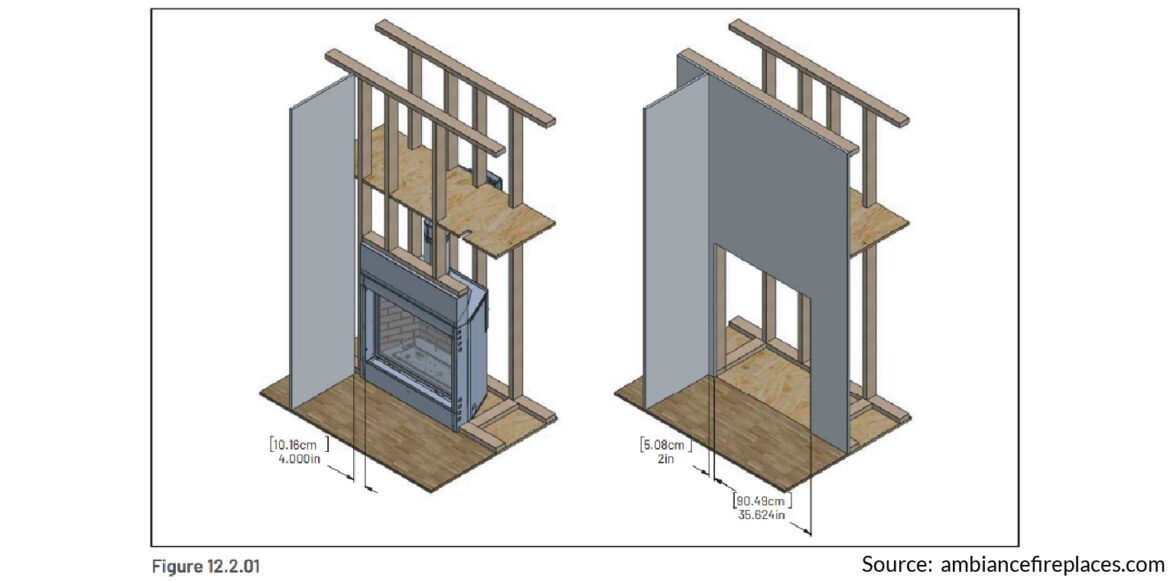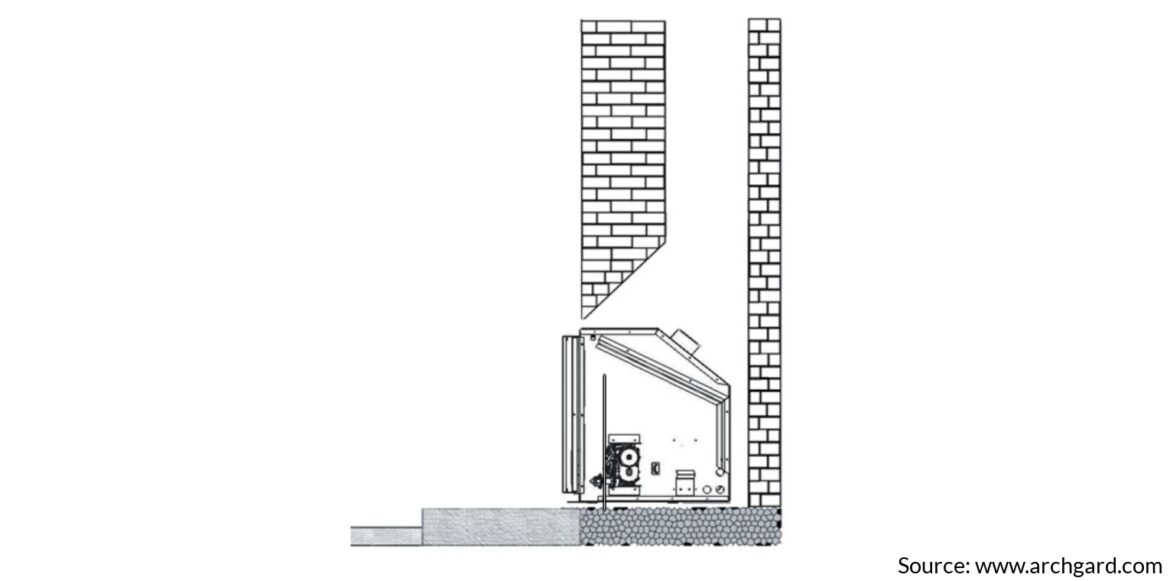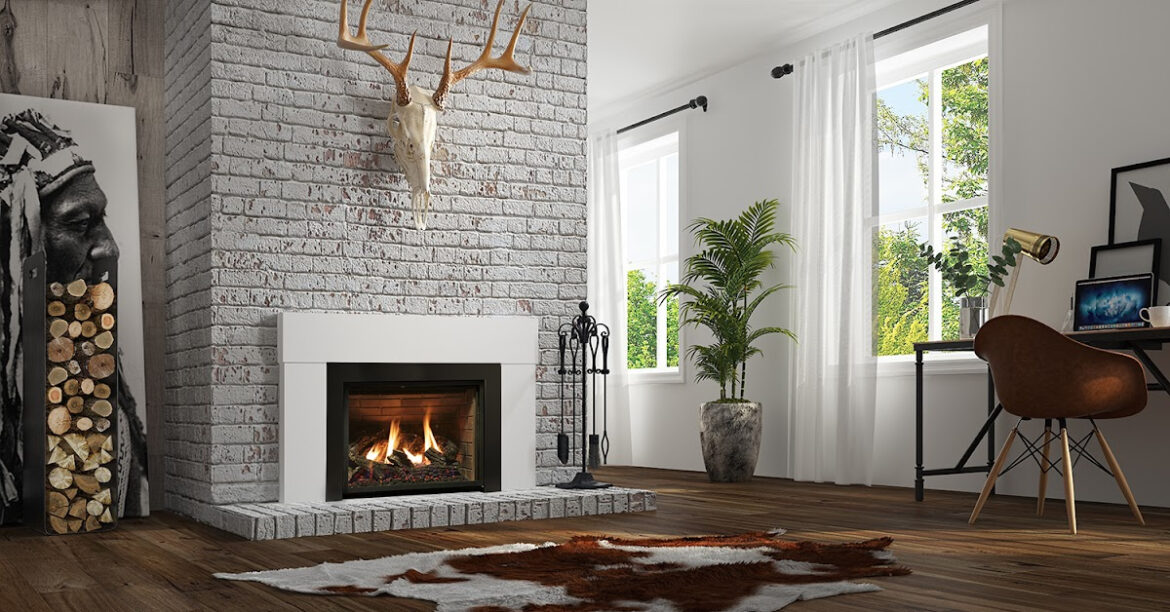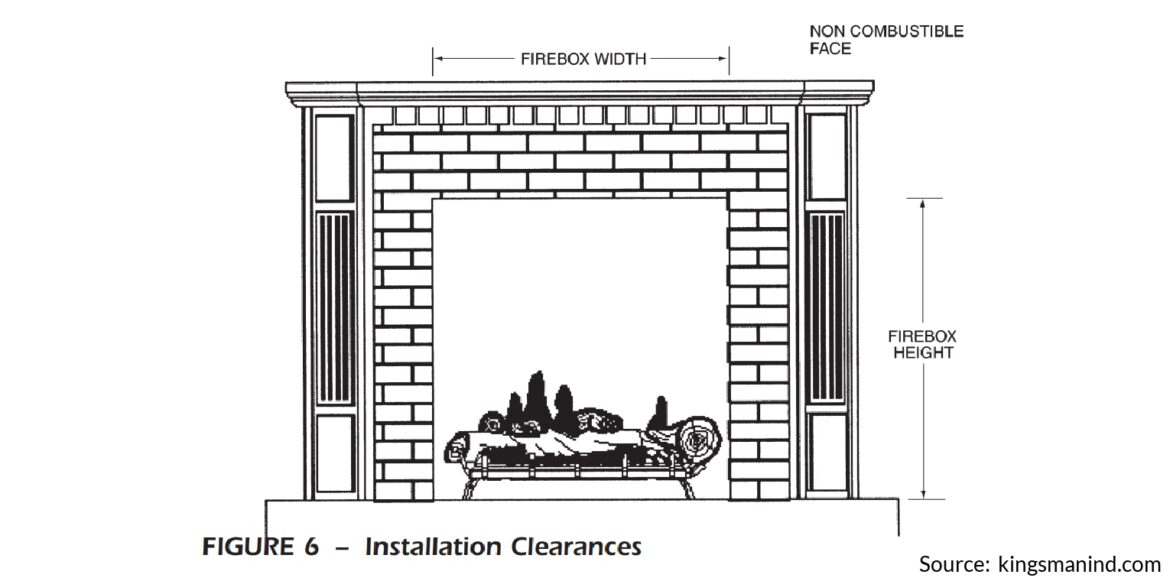This is the first in a series of articles that will provide sound advice if you are planning a building or remodeling project and have plans to include a gas hearth product. To begin with, it’s important to know and understand the differences between a gas fireplace, a gas fireplace insert and a gas log set. These are three distinct products, for three distinct types of applications. These articles will explain the differences in each of these products and important points to consider before making a purchase. But first, let’s start with a thorough definition of each.
GAS FIREPLACES
A gas fireplace consists of a steel firebox that contains a burner. This burner could be a ceramic or stainless steel tube that has many ports or holes in it to allow the flames to be seen. The burner is designed to accommodate a specific set of logs or other media, such as colored glass beads or stones.
Gas fireplaces are built into a framed 2×4 or 2×6 stud wall. The firebox, described above, is surrounded by an insulated housing or shell that protects the stud wall from excessive heat. The term “zero clearance” (ZC) means the fireplace, thanks to the insulated shell, can actually be in contact with combustible framing members and will prevent the wall from getting too hot. See the sketch and note how a typical ZC fireplace can be easily built into a wall in your home.

Gas fireplaces have a large piece of sealed, ceramic glass that enables a splendid view of the fire. These fireplaces are “direct vented”. That means the combustion process is sealed and air for the fire comes from the outside, via a special co-axial pipe. Room air is not used for combustion, but rather is heated as it circulates around the hot, steel firebox. Then the warm air is returned to the room with the assistance of a small, variable speed fan.
There are dozens of techniques to provide that personalized, finished look around a zero clearance gas fireplace. Cultured stone, brick, steel, ceramic tile, granite and marble are all popular and common options. A gas fireplace is typically controlled with a remote or activated with an on/off wall switch.

Gas Fireplace Intrigue Ambiance
GAS FIREPLACE INSERTS
A gas fireplace insert is designed to be slid into (or inserted) into an existing wood burning fireplace. A gas insert will convert your old wood burning fireplace into an efficient and reliable form of heat and enjoyment for your family. Commonly called just an “insert”, these units also consist of a steel firebox that contains a burner. The burner can be a ceramic material or a stainless steel tube. Either will allow the gas flames to be enjoyed with logs, colored glass beads or stones.
An electric and gas supply line will need to be installed into the existing wood burning fireplace. Two flexible aluminum pipes are installed up the chimney. One brings combustion air into the firebox, the other vents combustion by-products, out.
Inserts are never to be built into a framed wall. An insert does not have any type of insulated housing around the firebox.

The ceramic glass on an insert is sealed. Gas inserts are also “direct vented”. Outside combustion air is funneled to the firebox with a flexible aluminum pipe installed through the chimney. Like its ZC gas fireplace cousin, air from the room is heated as it circulates around the steel firebox. Then, this warm air is returned to the room with the aid of a small quiet fan.
The finished look of an insert includes surround panels that are used to cover up the rest of the wood fireplaces’ opening. Older, outdated fireplaces are often updated with a new mantel and/or cultured stone or brick.

Gas Insert Ambiance
GAS LOG SETS
Gas logs are used to update an existing wood burning fireplace. They are normally purchased for decorative reasons, rather than for heating purposes.
Basically, a gas log set is several attractive logs, designed with a burner, on a grate. Gas logs will modernize an old wood burning fireplace, but will not provide the efficiencies or heat output that many people want. Gas logs do not come in a steel firebox. They are simply installed into an existing wood burning fireplace.

The amount of natural gas or LP a log set uses is often 2½ or 3 times more than the fuel consumption of a gas insert. A gas supply line will need to be installed into the fireplace. No electrical connection is necessary, as gas logs do not have fans to circulate warm air.
Gas logs use room air for combustion.
The damper on the chimney needs to be fully open when burning a vented gas log set. Unvented gas logs do not need the damper open. However, unvented gas logs are not permitted in some areas, so be sure to check with your WE LOVE FIRE® expert regarding specific code requirements in your locale.
The chart below will summarize the differences between a zero clearance gas fireplace, a fireplace insert and a gas log set. And now hopefully, you have a better understanding of what product will work best for you!
| GAS FIREPLACE | GAS FIREPLACE INSERT | GAS LOG SET | |
| Is built into a framed wall: | Yes | No | No |
| Must be installed into an existing fireplace: | No | Yes | Yes |
| Operated with a remote control: | Yes | Yes | Yes |
| Vertically or horizontally venting options: | Yes | No | No |
| Vented through an existing chimney w/flex pipe: | No | Yes | Yes |
| Steel firebox with integrated burner: | Yes | Yes | Yes |
| Available in natural and LP gas: | Yes | Yes | Yes |
| Quiet, variable speed fan: | Yes | Yes | No |
| Typical amount of gas used per hour: | 20-40,000 BTU’s | 15-35,000 BTU’s | 60-80,000 BTU’s |
| Easy and convenient to operate: | Yes | Yes | Yes |
| Several sizes, styles and options available: | Yes | Yes | Yes |
| Rated for energy efficient: | Yes | Yes | No |
Future articles will discuss more details of these three categories of hearth products.
